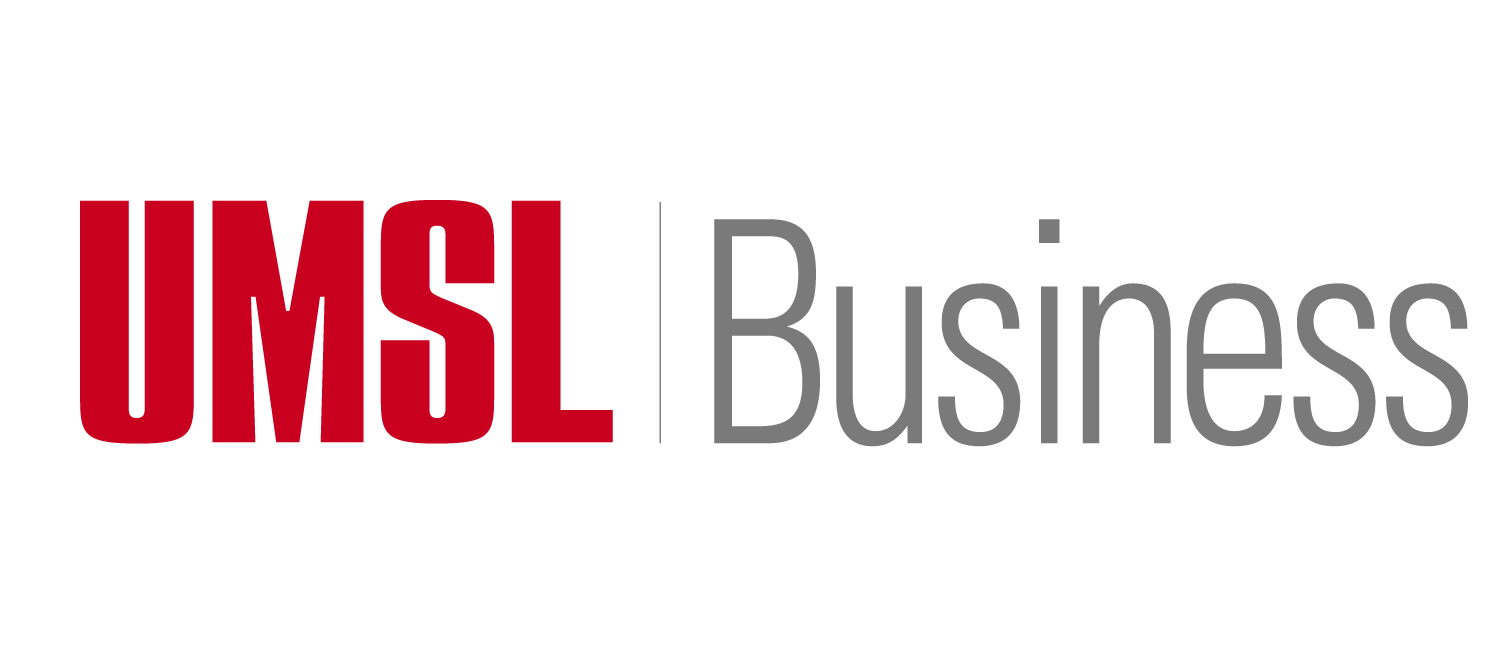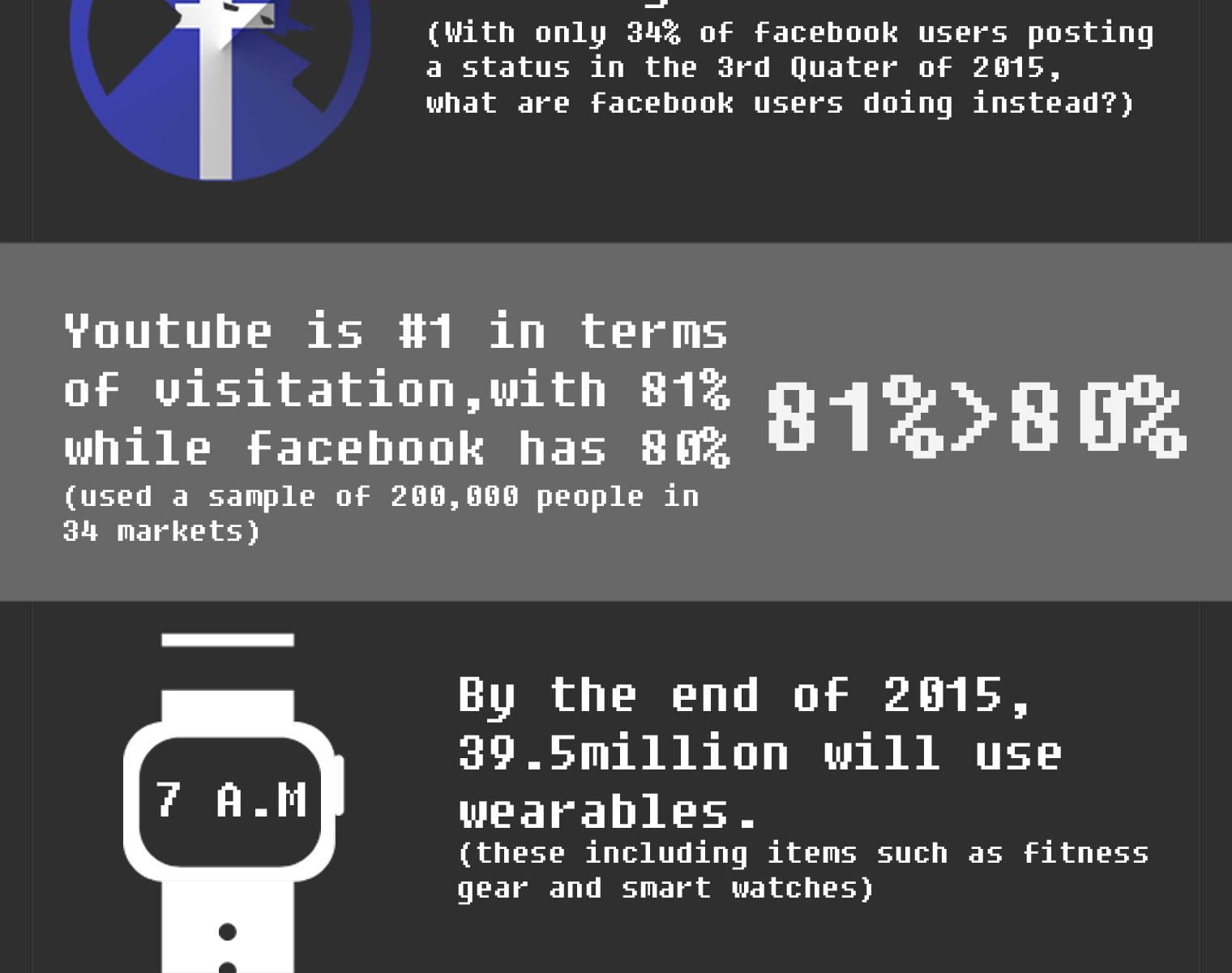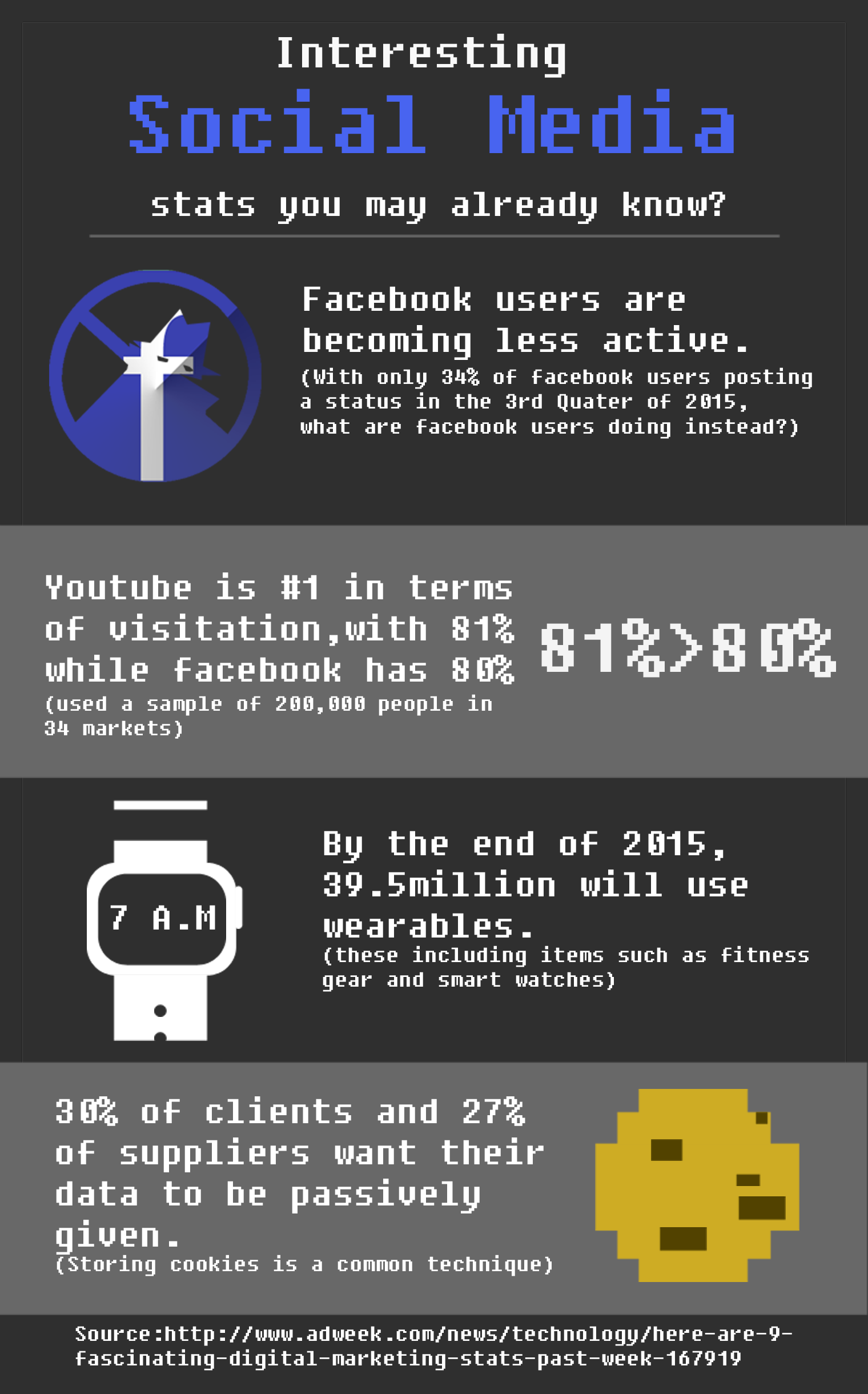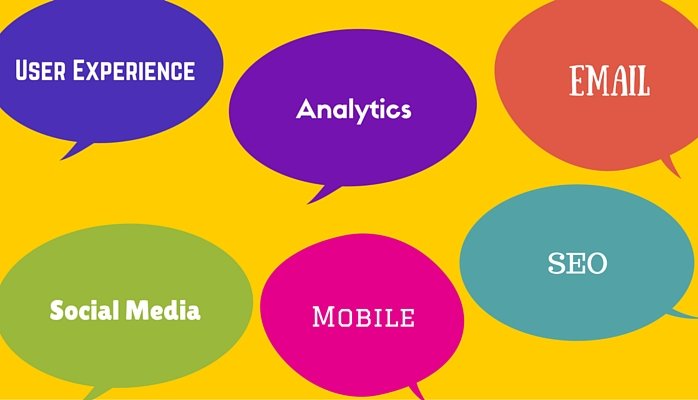By: Brittney Hager with the contribution of TJ Sheffer, Gabrielle Sealey, Jordan DeMars, Daniel Klevorn, and Pablo Romero
 Technology has evolved drastically and brought a rise in social media. Almost everyone has at least one form of it, Continue reading “6 Ways To Make Your University’s Social Media Channels Work Better”
Technology has evolved drastically and brought a rise in social media. Almost everyone has at least one form of it, Continue reading “6 Ways To Make Your University’s Social Media Channels Work Better”
3 Ways to Boost Your Snapchat Efforts
By: Chase Kohler
Snapchat is the emerging network the industry cannot get enough of. While traditional social media has been focused on preserving memories for generations, Snapchat delivers on their promise that twenty-four hours later the moment never happened. With live filters, download capability and geo-targeting options added over the last eighteen months, the former ‘teenage wasteland’ has become one of the fastest growing marketing platforms. While major brands and events across the gloImage_Abe have made their way onto this platform, surprisingly, marketers as a whole have been slow to embrace the latest social trend, with only an estimated 70% active on the platform on a consistent basis.
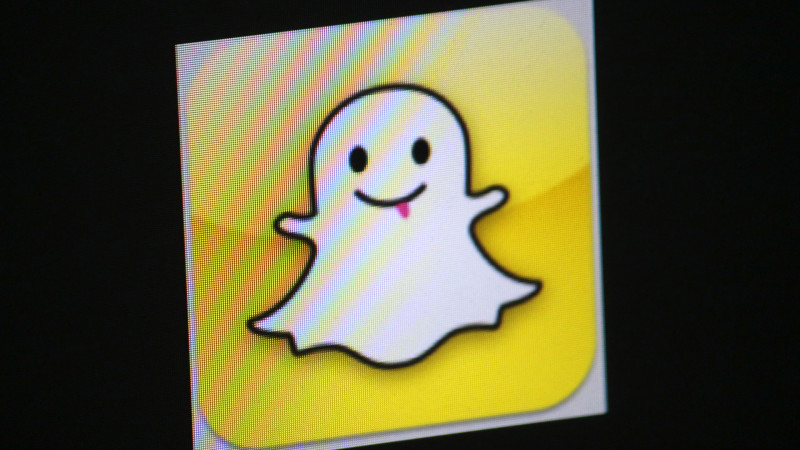 So what’s alluring about vanishing photos, videos and filters? Unlike the ever-lasting portal of Facebook and Instagram, Snapchat holds content that cannot be scanned by Googlet least not yet, we’re watching you Google +). To follow a brand that is not paying to play on the main page, one has to manually enter the exact name or scan a barcode. Snapchat takes more effort than traditional social media networks to engage with, meaning those who do engage feel a much stronger connection than just scrolling through a curated feed. Since a user can switch from plastic surgery cuts to CNN breaking news through a simple swipe, the options become limitless for what brands can offer.
So what’s alluring about vanishing photos, videos and filters? Unlike the ever-lasting portal of Facebook and Instagram, Snapchat holds content that cannot be scanned by Googlet least not yet, we’re watching you Google +). To follow a brand that is not paying to play on the main page, one has to manually enter the exact name or scan a barcode. Snapchat takes more effort than traditional social media networks to engage with, meaning those who do engage feel a much stronger connection than just scrolling through a curated feed. Since a user can switch from plastic surgery cuts to CNN breaking news through a simple swipe, the options become limitless for what brands can offer.
Here are a few easy ways to jumpstart your Snapchat presence now:
1. Create a Geofilter
Genius or simplistic, one cannot deny the stronghold geofilters have provided to Snapchat’s growth. Whether on a street, at a national monument, or attending your cousin’s wedding, geofilters provide a custom filter that anyone can use to personalize a photo. Priced based on the amount of space and volume of users, geofilters range from $15-20,000 for a twenty-four hour period. With photos from Snapchat appearing more frequently across other platforms such as Instagram, this tool provides promotional potential beyond your simple sugar rush.

2. Ask for a ‘Snap Back’
While many brands utilize Snapchat for bursts of behind the scenes magic, not every brand has an exciting celebrity ready in the makeup chair. According to Adweek, nearly a fourth of all content created on the platform is product focused, yet only a meager 11% of all brands request a further call to action! While content strategies will vary depending on business model, those ten seconds you have with consumers is your time for pure engagement. Keep the campaign going with a URL name or ask them to ‘Snap Back’ ideas! Side Note: Live links are not a feature in Snapchat for brands yet, but it’s most likely only a matter of time.
3. Give a Personal Lens
As mentioned above, the introduction of interactive filters last year helped Snapchat’s content move from native to national, with added capabilities like image downloading and re-purposing on users’ Instagram, Twitter and Facebook accounts. Interactive filters use facial detection technology to create a custom environment over someone’s silhouette. Beyond the millions of puppy dog images created lies a key potential for marketers-sponsored lenses. This recent example from Wendy’s showed the ‘Hot’ lens to promote their new Jalapeno Fresco melt. No longer are messages only being pushed to users, but they are personally choosing to utilize them. That’s brand power like never before!
So if you’re not on Snapchat yet, either for personal or brand reasons, there’s no time like the present. With the network still considered ‘emerging’, we have yet to see the full potential this platform has to offer marketers. Only recently have they introduced their new paid advertising platform, complete with a toolbox of analytics to make our senses tingle. Creating content on the platform is perhaps the cheapest of all social media networks because you don’t need high quality designs or surveys – just day to day activity. If all else fails, you came up with some cute new photos to share.
Image Credits
Image 1 VIA MarketingLand
Image 2 VIA SearchMarketingExpo
Tips for Students with a Passion for Social Media
By: Amy Cabanas, Matteo Fialdini, Kathrin Hanke, Andrew McClure and Jacqueline Williams
 Sarah Dalton works as both a Marketing professor at UMSL, where she graduated with her MBA in digital marketing, as well as in the marketing field. She describes herself as organized and creative, and is an active user across social media platforms, as well as, a blogger on her personal blog www.socialseconds.com.
Sarah Dalton works as both a Marketing professor at UMSL, where she graduated with her MBA in digital marketing, as well as in the marketing field. She describes herself as organized and creative, and is an active user across social media platforms, as well as, a blogger on her personal blog www.socialseconds.com.
When Sarah found out about the opening for a social media professor, she took the opportunity to spread her passion about social media to UMSL students. Sarah is excited to be contributing to the UMSL Digital Marketing Conference which will be held on April 21, 2016. We caught up with Sarah to ask her about her career, her love for social media, and her thoughts on St. Louis’ growing digital marketing scene.
Check out the interview below!
1. Do you feel UMSL’s digital marketing MBA program helped in preparation for your current job and teaching?
I don’t think I would be anywhere without my Digital Marketing Certificate. Those classes really took me to another level. When I went to school we didn’t have those classes in undergrad. So, they really rounded out my marketing education and taught me things like blogging, digital marketing, digital strategies, measurement of digital media and of course more social media. Without those subjects I don’t think I would be where I am today.
2. Where do you see St. Louis going in the digital marketing scene, and how does UMSL fit into that?
We are in the Midwest so we might not always be in all the trends like they are on the east and west coast, but I think we are definitely getting much closer. With all the great people around, it’s so easy to collaborate on ideas and with local agencies. I see the digital scene getting stronger and stronger in St. Louis, and UMSL could not be doing any better. You don’t see these kinds of classes at other schools. As UMSL continues to grow these programs and add classes, the UMSL digital marketing students will continue to be a step ahead!
3. You have your own blog, www.socialseconds.com. Do you think having a personal blog is essential for social and digital marketers?
Yes, I think a blog is a great way to spread the word about what you think about social. Even if you don’t necessarily know what to say, you could talk about things you see other people do, provide recaps, or blog about guest speakers. It’s a great place to showcase your writing style and what you care about in social media. If you are too afraid to start a blog or don’t think you have the time to maintain it, you can always publish on LinkedIn Pulse.
Sarah also shared some other interesting thoughts and advice with us marketing students. “Having your own blog really shows companies that you know how to build a WordPress site, that you understand content, and that you have written a few blogs. It’s just a really easy way to showcase yourself,” Sarah said.
Sarah also often references her own marketing guru Gary Vaynerchuk, author of Jab, Jab, Jab, Right Hook – “Gary started from the bottom and built up his social media enterprise into what it is today,” said Sarah.
Lastly, Sarah highly recommends marketing students get involved with the AMA St. Louis-The American Marketing Association, and attend the UMSL Digital Marketing conference on April 21, 2016. “MDMC16 will be a full day event of all things digital marketing. People come in from all over the country to speak to us. It’s a better value than any other conference I can think of,” she said. “And it is FREE for UMSL students (but unfortunately now sold out)!”
Follow Sarah on Twitter: Sdaltonstl
#STL Thought Leader Brianna Smith Talks All Things Digital Media
By: Nicole Atencio, Minji Choi, Je Ewing, Chase Kohler, & Tiara Wilkerson
 On April 21st, the Midwest’s largest digital marketing conference will be held at Union Station in St. Louis. On our journey to discover how marketing has shaped this community we were introduced to Brianna Smith, a thought leader in the digital marketing industry and a local supporter of UMSL. She is the Director of Marketing and Communications for the 2016 Midwest Digital Marketing Conference. Continue reading “#STL Thought Leader Brianna Smith Talks All Things Digital Media”
On April 21st, the Midwest’s largest digital marketing conference will be held at Union Station in St. Louis. On our journey to discover how marketing has shaped this community we were introduced to Brianna Smith, a thought leader in the digital marketing industry and a local supporter of UMSL. She is the Director of Marketing and Communications for the 2016 Midwest Digital Marketing Conference. Continue reading “#STL Thought Leader Brianna Smith Talks All Things Digital Media”
Tips From Your Future Social Community Managers
By: Nicole Atencio, Amy Cabanas, Minji Choi, Matteo Fialdini, Kathrin Hanke, Tira Wilkerson, Jacqueline Williams
We are halfway through our immersion into Social Media Marketing For Business this semester. So far, we have covered content marketing, the impact of blogging on social, Hootsuite as a social manager’s tool, and in-depth discussions of Twitter, Facebook, LinkedIn and the Emerging Networks (Pinterest, Instagram, Snapchat, YouTube, Google+) for business use.
Here are our top takeaways from our social studies thus far:
There is a huge difference between “curating” and” creating” content. Curated content is information generated from other sources (like sharing Forbes or Mashable articles), whereas created content is derived from the creators own resources (like infographics, whitepapers, blog posts, shareable art).
Understand Jabs vs. Right Hooks by Gary V. Is a company trying to sell their product, or just making you aware of information you might be interested in? A “Jab” is content that makes customers laugh, think or play a game, but does not give a strong selling impression. “Right hooks” are content pieces that typically include call-to-actions (CTAs) that lead to actual purchasing.
Use the 4-1-1 Content Rule. This rule states that for every 4 informative content pieces you have, you should have 1 hard and 1 soft sell. The hard-sell provides a strong call-to- action (CTA), and the soft-sell subtly incorporates the brand in the message.
Be attentive. Look for events, causes and shows coming up in order to create content about something other than your business. Be mindful of your account, and make sure you are posting and commenting on a regular schedule. Not having any current activity will lead your followers/customers to believe you are not serious about your business.
Organic reach is estimated to be 2.6% for Facebook pages. With organic reach declining, it is important for businesses to use paid reach. Paid ads are not free, but allow the content to be targeted to non-followers.
Hootsuite is the best social tool you may have never heard of. Hootsuite is a great creation that can assist you in planning and scheduling the posting of your future posts for all your social media channels. Another great free tool is www.canva.com for creating beautiful social media images and graphics.
Align your brand’s social channels. Across the board, you want all your social media channels to incorporate the same logo, descriptions, and messaging, but with the flavor of the channel. The same goes for your personal pages – use the same headshot and handles whenever possible.
All businesses should be on LinkedIn. This social network provides you with credibility, a large network of professionals, sales opportunities, and a marketing platform for your business. There are a multitude of options for ads as well. Sponsored Updates will go to a wider audience than page followers, Dark Posts are ads seen on non-follower newsfeeds (but not in the company timeline) and Sponsored InMails allow you to send a targeted message that appears in a LinkedIn user’s inbox.
Everyone can be a publisher on LinkedIn Pulse. Pulse is a great opportunity to publish relevant articles or blog-like posts without necessarily having to own a separate blog. Pulse can be helpful in increasing LinkedIn followers and inbound site links.
Instagram is key in today’s market. It’s important to remember a few things before posting for your company. Don’t use stock photos – photos should be taken as native because you are going to reach the younger generations who are expecting that. Moreover, use descriptive hashtags in excess as the method to reach the most people looking to discover your brand or business category.
Understand the proper use of pictures. It’s important to make sure that you don’t use pictures from someone else without their permission. It’s best to take or create your own pictures to post on social media than using Google or other search engines.
Use Twitter hashtags. Hashtags tag tweets by topic and make it easier for others with similar interest to find your tweets. Also, hashtags help social media marketers promote and track social campaigns.
What else should we know? What do you wish your entry-level social and content employees were stronger at?
Up next: we’re putting this all together in a social strategy and analyzing for social ROI!
Social Media's Impact on Businesses [Infographic]
By: Hayley Alexander, Nikolas Presat, Lexi Tocco, Connor Agniel, Jake Bryant
Social media is such a big part of today’s society. How a business takes advantage of social media can have a tremendous impact on their success. Social media helps attract, interact, and engage costumers to their brand. We found that 75% of consumers on Twitter never “unfollow” a brand, and 50% of consumers go online to Twitter more than once per hour. On Facebook, 49% of consumers “like” a page to support a brand. and 41% opt-in to receive updates from the brand. This shows that consumers are wanting more information from the brands they love.
Another social media outlet that is great is Instagram. 90% of the information transmitted to the brain is visual. This is why bloggers love this app; it’s quick and easy to post about your company. Instagram’s platform currently has 50 times the engagement rate over Facebook because all you have to do is scroll. Many also use YouTube as it is the world’s 3rd most popular ad network. More than 800 million visit YouTube every month, and watch more than 4 billion hours of video. So you know that people are on YouTube, so why not take advantage of it?
Lastly, businesses like to use LinkedIn as a source to promote their brand. 1 in 3 professionals on the planet are on LinkedIn, and 41% of millionaires use it. LinkedIn is all about networking and getting to know others in related fields. Who wouldn’t want to connect with a millionaire?
As you can see, all these social medial channels are great, easy and efficient, ways to promote and educate consumers about your brand.

Interesting Social Stats [Infographic]
How I managed to embrace the shift to digital marketing
 By: Sarah Dalton, UMSL Digital Mindshare Editor-in-Chief and UMSL MBA Student
By: Sarah Dalton, UMSL Digital Mindshare Editor-in-Chief and UMSL MBA Student
As a 2009 graduate with a degree in Business Administration, a concentration in Marketing and a minor in Communications, I really thought I was ready to take on the marketing world. Or, maybe I had just drank too much of the liberal arts kool-aid (#GoBulldogs).
The first few years of my career were great. I started as a Marketing Analyst, learning the ins-and-outs of the client experience, calculating MANY a cost-per-sale analyses and making recommendations as to which campaigns needed to be accelerated and which needed to be trashed.
As I progressed into marketing generalist roles, all things digital quickly became part of my daily responsibilities. I was creating banners, landing pages and social assets on the fly. Even though YouTube and blogs proved to be fantastic resources for learning more about my new responsibilities, I felt like I had a GAPING hole in my skill set and education in regards to all things digital marketing. Yes, I could brief a designer on how to create an appealing banner, write a clever social post or develop drip email campaigns… but what did this all mean? How did this all work together, and what the heck were we really spending our resources on?
I realized that even graduating in 2009 (wow – less than 7 years ago) was still TOO EARLY to have any formal education on digital strategy. I knew all about consumer behavior, retail marketing and integrated campaigns, but there wasn’t a single digital course or project to speak to from my undergraduate transcript. And not at the fault of my alma mater – this digital takeover just happened so fast.
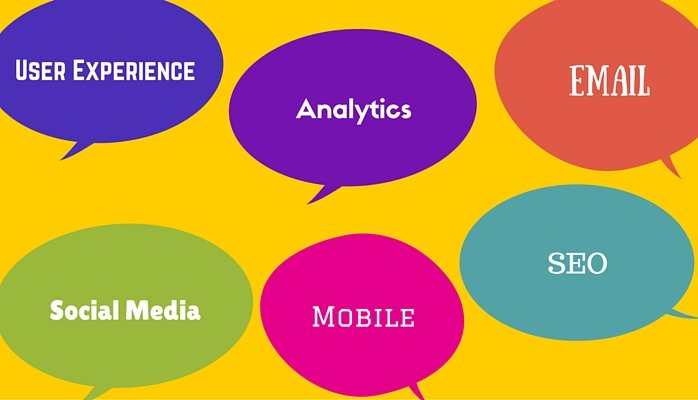
After a lot of research and networking with the best minds in St. Louis digital, I discovered that Digital Marketing Certificates from universities are starting to be “a thing.” They usually landed in the Professional Studies or Schools of Continuing Education in my research experience. In true Sarah fashion, I jumped right in and decided since I was starting a Digital Certificate, I might as well just complete a full-on MBA in the process since many of the classes could be credit toward an MBA anyway.
This education has completely changed both my skill set and overall confidence in digital tactics. There are still things I don’t know that come up, but I now feel like I have the right base level understanding to attack these issues head-on. Here’s a sample of the coursework I recently completed to acquire my certificate:
-Digital Media Marketing Strategy & Measurement
-Clinical Study in Digital and Social Media Marketing (this was like a mini-internship to help non-profits with their digital strategies)
-Social Media Strategies
-Mobile Marketing
-Blogs to Buzz
-Digital Media Buying
Going back to school or fitting in classes on the weekends is definitely not the answer for everyone. It’s about timing. Here are additional non-school resources I have used to round out this new knowledge:
1. Digital Marketing Conferences | Here’s a sample of ones I attend in St. Louis and one I attended in New York this year. Google what’s happening in your city.
Social Recruiting Summit
Digital Marketing Conference
2. HubSpot.com Blogs | One of my best and most visited friends. Search for anything social or digital, and you’ll find very tactical descriptions and tips.
3. Lynda.com | Did you Lynda.com is now a LinkedIn company? Great (and cost effective) resource to pick up more “formalized” training.
4. Hootsuite University | I cannot say enough about how much Hootsuite makes the lives of social media managers easier. As an added bonus, they now offer an entire suite of classes that teach you not only how to best use their platform, but also how to effectively build, target and deploy social campaigns.
5. Networking | Meet with the best digital talent that will reply to your emails. Is there a local Social Media or Digital Marketing Club? I know St. Louis has several. Admit you’re clueless and talk to the experts about how they “figured it all out” in the city you are in. And, these are awesome connections for later when you “get it.”
Digital and social are not only here, they are speeding away. It’s part of our jobs as effective marketers to keep up.
How do you stay ahead?
Instagram: Then and Now
 #Throwback:
#Throwback:
On October 6, 2010, co-founders Kevin Systrom and Mike Krieger released a free mobile app to the world known as, Instagram. The two developed the simple application in San Francisco, California; naming the app after the combination of words “Instant Picture” and “Telegram.” Quickly gaining traction, the app gathered enough attention to accrue one-million users by December 2010, and ten-million users by September 2011. During the same year Instagram was awarded, “iPhone App of the Year.”
For nearly two years since its inception, Instagram remained an application available exclusively to the iPhone. In April 2012, Instagram made a huge move allowing people who owned Android phones to now download one of the most popular mobile applications in the world. With this flood of new users and surge in popularity, Facebook decided to seize the moment and purchase Instagram for one-billion dollars: $300 million of it was in cash, and the rest was invested in Facebook’s stock.
After Facebook’s hefty investment, Instagram continued to explode in popularity. By integrating new features into their still-photo dominant system – the application kept evolving through the introduction of Instagram Videos, as well as the ability to now view Instagram media from the web. These simple yet groundbreaking additions to the app pushed the company to have 150 million users by the year 2013 – to now having doubled that with 300 million active users as of August 2015.
As the saying goes, “a picture is worth a thousand words.” For some, a simple post of a picture is all the person needs to convey the exact message they are trying to send to their followers. With other forms of popular social media such as Twitter and Facebook; Instagram separates themselves from the pack by focusing their attention on making photos the main form of communication among their users. Through the use of filters and simple yet very clever photo editing tools accessible right from the application; the user can make their picture look as if a professional photographer took it and edited it.
#InstagramFamous:
Many celebrities, as well as companies – make full use of Instagram’s large following by advertising their products and themselves to reach the masses much more effectively. Celebrities who have large followings on Instagram include, Taylor Swift (the most with 48 million followers), all of the Kardashians (Kim has 47 million – Khloe has 32 million), soccer stars Neymar and Christiano Ronaldo with 32 million and 31 million respectively, as well as many more who have well over 10-20 million followers a piece.
These staggering numbers obviously mean that these people have a lot of social influence when it comes to their followers. Companies of course then look to these people to help promote their company or brand whenever their celebrity has the opportunity to take a quick selfie and write a caption about it.
#Marketing: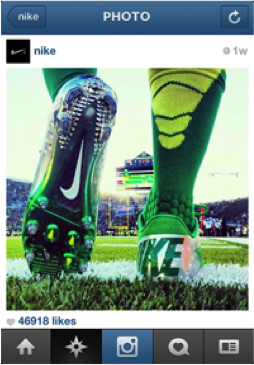
One celebrity who does a very good job at promoting himself as well as other ventures is, Dwayne ‘The Rock’ Johnson. Becoming most popular in his early days as a professional wrestler in the WWE, ‘The Rock has since gained even more popularity by staring in many action films such as, “The Fast and Furious” franchise; as well as “San Andreas”, and “Hercules.” With 28 million followers on Instagram, ‘The Rock’ has one of the largest influences when it comes to the app. Sharing pictures of his everyday life, as well as hilarious videos of him on set or working out – ‘The Rock’ makes sure to make his presence known in the Instagram community, and many companies take note. He recently announced that he partnered up with Ford motor company as their official Spokesman of Service. This announcement of course came through the use of Instagram by using a picture of him standing, arms crossed, with the Ford logo floating beside him. Simple posts like these influence the minds of thousands of followers who happen to take a glance as they scroll through their ‘feed.’
Companies not only make sure to post through the use of their sponsored celebrities, but also make sure to post pictures on their own Instagram accounts. Many major companies that make products for consumers now-a-days have their own official accounts, keeping their potential buyers up to date with the latest clothing, gadgets, and services that they are willing to exchange.
Companies such as Nike and Victoria’s Secret (23 million and 22 million followers respectively) make sure to constantly flood their followers’ feed with new and upcoming products that can be purchased on their website; if not the store. Accounts such as BodyBuilding.com announce product deals that can be viewed first from Instagram.
It is through these simple pictures and captions that celebrities and organizations alike hold a very large influence on society. By tracking how many likes a picture gets and understanding who the target audience is, companies can position themselves to appeal more to followers who will in turn, hopefully, become customers.
Instagram by the Numbers

Here are 5 quick Instagram facts according to ICONOSQUARE’s Instagram 2015 Study:
Fact #1 – 61% of Instagramers like at least 1 media/day and more than 30% like over 10 media/day
Fact #2 – 64% of Instagramers are women, 36% men. 73% of Instagramers are between 15 and 35 years old
Fact #3 – 70% of Instagramers have already looked for a brand on Instagram. 41% follow or would follow a brand to benefit from special offers
Fact #4 – 48% of Instagramers are professionals. 46% of Instagramers have higher education degrees
Fact #5 – Top 3 reasons why users follow brands on Instagram: 62% because they love the brand, 54% to discover new things, 48% because they find content interesting or funny.
What is your favorite brand to follow on Instagram?




